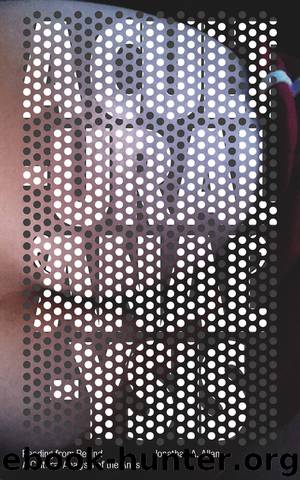Reading From Behind by Jonathan A. Allan

Author:Jonathan A. Allan
Language: eng
Format: epub
Publisher: Zed Books
Published: 2016-02-20T16:00:00+00:00
CHAPTER 6
Unlocking Delmira Agustini’s “El Intruso”
IN THIS CHAPTER, I TURN TO POETRY, MORE EXPLICITLY to one of the most canonical examples of Latin American modernist poetry, Delmira Agustini’s “El Intruso” (The Intruder). Agustini is largely recognized as one of the most important modernist poets from Latin America, and her work has been of significant interest to a range of scholars, especially feminist literary critics. What has yet to be completed is a queer study—of any kind—of Agustini. This chapter, to a certain extent, aims to open the door to this kind of reading of her work, but it attempts to do so only by reading “her most famous and most anthologized” poem, as J. Andrew Brown has called “El Intruso.”1
Madeleine Simonet, in an early scholarly article on Agustini, begins by declaring that she was “one of the greatest women poets of Latin America,” and her “life and work were brief, but filled with intensity in that constant, mystical search for some higher form of love that could satisfy both her carnal and her spiritual yearnings.”2 Certainly, one of the largest concerns in scholarship on her poetry has been the slipperiness of this binary between an erotic love and a spiritual love or a kind of pursuit of transcendence. However, various critics have also sought to displace the eroticism of Agustini’s verse, a task that I argue misreads—wilfully—an essential part of her oeuvre, which really is, bluntly put, erotic. To deny the eroticism is to deny a search for an “authentic feminine” voice that recognizes the complexity of femininity and female authorship.3 In working to displace the erotic, we also run the risk of missing out on the queerer aspects of Agustini’s oeuvre, which celebrates an eroticism not inherently heteronormative, not essentially heterosexist in orientation. Instead, we find a range of sexual themes that includes sexuality as pleasure (i.e., not concerned with procreation), sadism, and masochism. Her final book of poetry, Simonet observes, “scandalized the people of Montevideo, who, it is said, thought her poetry was no longer kept within the realms of decency.”4 It is imperative that we recognize the explicit and implicit eroticism in her verse and that we think about the erotic in queer terms. Sarah T. Moody has argued that, “while other modernistas [‘modernists’] offered images of women as emblems of beauty and of formal or poetic perfection, Agustini’s images directly are markedly variable and diverse, emphasizing grotesque and violent figurations that directly rebut imagery of female passivity.”5 Her poetry thus responds directly to governing ideas and ideals about “female passivity” and instead offers a radical redescription of those ideas and ideals.
In “El Intruso,” readers are provided with a common enough treatment of eroticism, love, and desire. Brown explains that Agustini “describes the nocturnal encounter that marks the beginning of her relationship with the lover/intruder” and that the poem “evokes the master/slave relationship,” a theme that appears often enough in erotic poetry.6 Likewise, Ignacio Ruiz-Pérez argues that Agustini “subvierte y distorsiona el lugar común del otro” (subverts
Download
This site does not store any files on its server. We only index and link to content provided by other sites. Please contact the content providers to delete copyright contents if any and email us, we'll remove relevant links or contents immediately.
| African-American Studies | Asian American Studies |
| Disabled | Ethnic Studies |
| Hispanic American Studies | LGBT |
| Minority Studies | Native American Studies |
Cecilia; Or, Memoirs of an Heiress — Volume 1 by Fanny Burney(32413)
Cecilia; Or, Memoirs of an Heiress — Volume 3 by Fanny Burney(31823)
Cecilia; Or, Memoirs of an Heiress — Volume 2 by Fanny Burney(31805)
The Great Music City by Andrea Baker(31250)
We're Going to Need More Wine by Gabrielle Union(18951)
All the Missing Girls by Megan Miranda(15495)
Pimp by Iceberg Slim(14320)
Bombshells: Glamour Girls of a Lifetime by Sullivan Steve(13952)
Talking to Strangers by Malcolm Gladwell(13185)
Norse Mythology by Gaiman Neil(13171)
Fifty Shades Freed by E L James(13145)
For the Love of Europe by Rick Steves(12652)
Mindhunter: Inside the FBI's Elite Serial Crime Unit by John E. Douglas & Mark Olshaker(9163)
Crazy Rich Asians by Kevin Kwan(9147)
The Lost Art of Listening by Michael P. Nichols(7388)
Enlightenment Now: The Case for Reason, Science, Humanism, and Progress by Steven Pinker(7166)
The Four Agreements by Don Miguel Ruiz(6599)
Bad Blood by John Carreyrou(6519)
Weapons of Math Destruction by Cathy O'Neil(6116)
